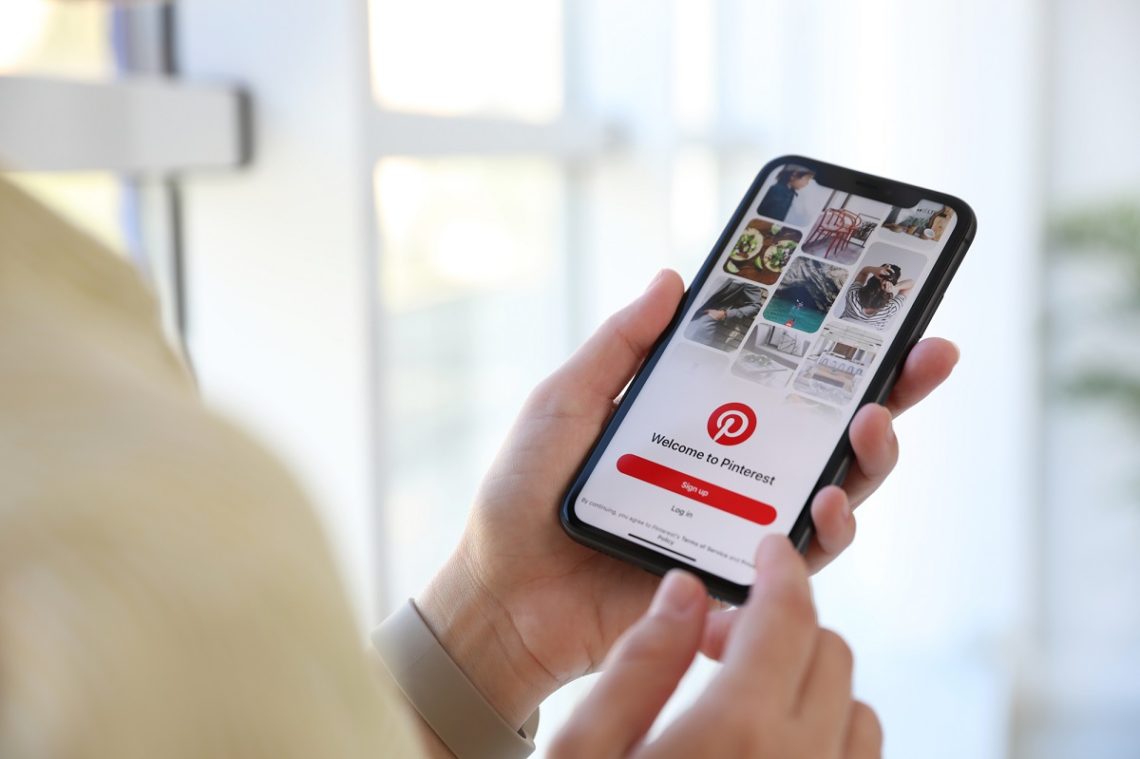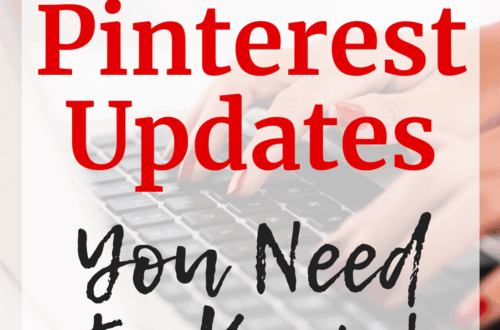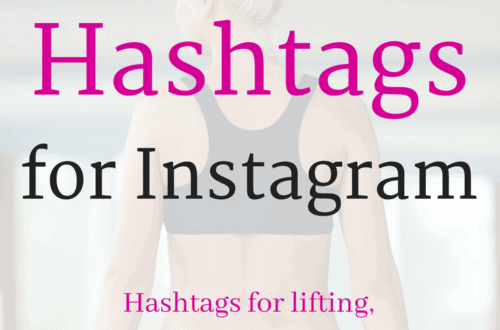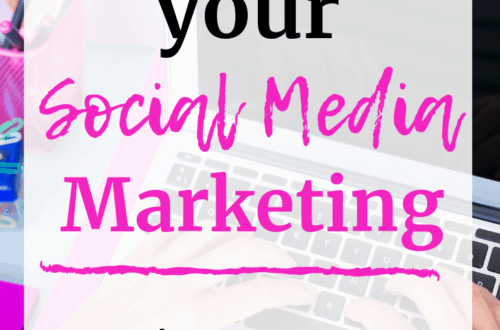
How to Make Money on Pinterest Without a Blog
Wondering how to make money on Pinterest without a blog? Not sure if it’s a real possibility or if all the internet gurus are just blowing smoke?
You’re in luck – there are actually many ways to earn some extra cash on Pinterest which don’t require having your own website. Like anything else in online marketing, these strategies will require a bit of hard work and hustle, but you can definitely create a solid revenue stream with these ideas.
1. Creator Rewards
This is one of Pinterest’s newest programs, and probably one of the best options to focus on if you’ve been on the platform for a while and have an engaged profile.
Creator Rewards offers you the ability to earn money for creating idea pins that target certain goals. Here are some examples of past creator reward goals:
- Publish an idea pin each week of the month and earn $250
- Earn $200 for each idea pin that reaches 100 saves
- Earn $400 for each idea pin that reaches 200 saves
As you can see, some of the goals are related to regular publishing, but many are incentives based on getting good engagement on your idea pins.
These amounts used to be higher earlier on in the program, but as the program has expanded they have dropped a bit. In my opinion, though, it’s still an excellent way to earn money on Pinterest without a blog!
To be eligible for Creator Rewards, you need to meet the following criteria:
- Use the Pinterest mobile app (you won’t be eligible if you only use the desktop version)
- Legal resident of US that’s at least 18 years old
- Have at least 250 followers on Pinterest
- In the last 30 days, you have created at least 3 idea pins AND have had at least 150 saves of all of your published pins
- Create original content on Pinterest
If you meet all those, you should automatically gain eligibility to Creator Rewards in the following month. When you’re on the app and you click on the “Creator Hub” tab, you’ll notice a little button that says “Earn” once you’re eligible. That will direct you to the rewards program where you can see the potential goals for that month.

Important note – as of July 2022, Creator Rewards was still in beta testing in the United States. If you don’t have access to it despite meeting the requirements, or if you are in another location, keep your fingers crossed that it will roll out more broadly soon.
2. Sponsored Content
Sponsored content has been one of my biggest revenue streams the last few years, though that spans across my own blog and social platforms. However, you can definitely do sponsored content on Pinterest without a blog.
If you’re unfamiliar with the concept, sponsored content is when a brand pays you to feature their product or service. This could be an idea pin that features the product in a review, recipe, tutorial, workout…the opportunities are endless.
Sponsored Pinterest opportunities in blogging networks are relatively rare, but it’s something you can directly pitch to a brand. They may not even realize it’s an option!
For example, last year I worked with one of my brand partners to do several sponsored idea pins (outside of any blog content or other social content). The results were great, with each idea pin garnering more than 5,000 impressions – great for brand awareness.

You can offer sponsored idea pins to brands as a one-off service, or you can include it as an add-on to other sponsored content you might do if you’re an influencer on another platform. It’s very easy to take the same content from Instagram Reels, TikTok videos, or Instagram stories and post similar content on Pinterest as an idea pin.
For example, when I create contracts for a sponsored TikTok video, I always include cross-promotion to Pinterest as part of the contract. It’s a great way for me to be able to have a higher overall rate for the contract while simultaneously providing extra value for the brand.
You can find great tips about sponsored content and pitching brands here (focused on blogs, but the same tips apply to social sponsored content). Once you have a brand that’s interested, work to put together a contract that outlines your deliverables and fees. The amount you should charge for sponsored content will vary depending on your niche, followers, engagement rate, and credentials/expertise.
In addition to direct brand pitching, it appears that Pinterest is also starting to leverage their platform to connect brands with creators who are interested in sponsored content. This branded content tab popped up in the creator hub this week, and it appears that by opting into it, you may be connected with relevant brands in the future for possible campaigns.

(Note this is brand new, though – at least on my app! – so I don’t have any insight as to how successful it will be).
3. Affiliate Marketing
Another way to make some extra cash on Pinterest is through affiliate programs. If you’re not familiar with affiliate marketing, you promote other people’s products or services and earn a commission on any sales that you generate.
You can create affiliate pins on Pinterest in two ways:
1. Create a static pin image or traditional video pin image that is connected to your affiliate link.
Static pins and video pins are different from idea pins; these offer you the ability to add a link to your pin. When someone clicks through on that pin, they’ll be taken to the sales page from your affiliate link. If they purchase the item, you earn money.
If you are doing this, you should make it clear on the pin image and in the pin description that you are using an affiliate link, per FTC disclosure rules. You can add something like “Affiliate link; I earn a commission.” Short, clear, to the point.
Here’s an example of an affiliate focused static pin that I created to direct people to my free trial link for Jasper (my fav AI tool):

This used to be the only way to do affiliate marketing on Pinterest, however with the advent of idea pins there is a second way…
2. Create an idea pin and use the approved affiliate partners to tag products in the idea pin.
While idea pins do not offer you the ability to add direct links, they do offer a unique functionality for approved affiliate programs. There are currently three approved affiliate programs for idea pins:
- Amazon Associates
- ShopStyle Collective
- Rakuten Advertising
When you create your idea pin, you’ll click the “stickers” button, then “product”, then add a link. That’s where you can add your affiliate link from one of those three partners above. Once you do that, that particular frame of the idea pin will include a clickable sticker for that product, like this:

Also, make sure the button is toggled on that says “This is an affiliate link”. That will add a little scrolling note on the pin that it includes sponsored products. I also like to add a disclosure to the pin image or video itself, like you see above.
[Find a complete tutorial on adding affiliate links to idea pins here.]
In my own tests and asking around to other Pinterest users, it appears that affiliate marketing tends to work best on Pinterest in the home, fashion, and tech sectors. I haven’t seen as much success in the food or fitness spaces. However, it is definitely still worth testing and seeing if it works for you!
4. Create Pin Templates
Maybe you love the visual aspect of Pinterest because you have an eye for design, and you’re not sure about diving into dealing with brands or feeling the constant push of content creation. There’s still a way for you to make money on (OK, more like in relation to) Pinterest without a blog – creating pin templates!
If you love Pinterest, you likely have scrolled through it quite a bit, so you probably have an eye for what types of pin designs catch your eye. You can create templates like this in Canva that social media marketing pros and bloggers can use as a “plug and play” solution for creating their own pins.
You can add fun design options using different text and colors, and add spaces for folks to simply drag and drop their images in. You can sell these to people in VA Facebook groups, or you can sell Canva templates on Etsy or Creative Market.
Note that Canva does not allow you to sell their own pre-made templates (which seems obvious, but just mentioning it regardless). However, you can sell original templates that you personally create in Canva using the “template” function in Canva. The template must be created for use specifically on Canva (i.e. customers are required to go back into Canva to finish designing/using it).
(Note: If you pursue selling templates, it’s a good idea to check Canva’s current license information, as it has changed frequently throughout the years. At the time of publish, the above information is accurate.)

5. Sell Digital Products
If you have any digital products – like e-books, worksheets, or printables – you can sell those via Pinterest as well.
Simply create static or video pin images that link directly to your product’s sales page. This could be a sales page that you create via a tool like Leadpages or Thrivecart, or it could be a sales page on a platform like Etsy.
Most people expect to click through pin images to get to blog posts rather than a sales page, so keep in mind that the conversions may be lower than other marketing methods. However, it’s a free platform and if you have a compelling enough sales page – you’ll likely earn some money this way!
Be sure the pin images you create are high quality, visually appealing, vertical orientation, and give someone a reason to click. Remember, you want to appeal to people that need a solution to their problem – or people that have aspirational goals and want help reaching them.
Also make sure to use good keywords in your pin descriptions, as Pinterest acts as part search engine, part social platform. When people search for terms related to your product, your hope is that your pin will come up in those results!
Don’t hesitate to also try out an ad budget for your product. You can try a consideration (traffic) campaign, which is where you pay for clicks on the pin. Note that when you bid on the CPC (cost per click), that refers to the click to enlarge the pin in their feed – NOT the second click from the pin to your sales page. It’s important to keep this in mind when bidding on the CPC you’re willing to spend.
Or, you can try a conversion campaign, which is where you pay for the result – like a sales checkout.
Your goal with these campaigns is to get enough sales that it outweighs the cost of the advertising, thus giving you a positive ROI. For example, if you spend $100 on an ad campaign and end up with $200 on sales, you have a net positive ROI of $100. That would be an excellent campaign to continue running.
6. Become a Pinterest VA
Last but not least – maybe you’ve been on Pinterest for a while and truly understand how the platform works for brand exposure. Or perhaps you used to use Pinterest for an old blog that you no longer have, but you get the ins and outs of using Pinterest to grow traffic.
You can use those skills to help other people grow their businesses on Pinterest! You can offer your services as a Pinterest Virtual Assistant (VA) to individuals or brands. This involves creating different types of pins, monitoring analytics, and may (depending on the contract) also involve running ad campaigns on Pinterest.
There are a ton of bloggers and small business owners who understand the value of being on Pinterest but don’t have the time to dedicate to it themselves. That’s where you can help, by taking over their Pinterest marketing and giving them a positive ROI.

A few years back, I helped a food brand with their Pinterest account for a year. It was really fun to be able to create visually appealing pins and help the brand grow traffic to their website. Over about a year, we were able to grow their Pinterest from 340 followers and 30 clicks to their website a month, all the way up to 760 followers and 2200 clicks to their website a month.
If you feel that you have the skills and expertise to work on other Pinterest accounts, consider pitching your services in VA groups, business owner groups, and to brands that you love (who you notice have a lacking Pinterest presence).
When developing your pricing, consider your time creating pins (static and idea), pin descriptions, responding to any comments, interacting on the platform, creating ads (if necessary), etc. Don’t undersell yourself.
The Bottom Line
From Creator Rewards to affiliate marketing and everything in between, there are lots of ways to make money on Pinterest without a blog. You just need to get creative and put in the hard work. Don’t be afraid to pivot if something isn’t working out for you, but also be sure to give each method enough time to take hold (for example, affiliate marketing on idea pins may take a few months to pick up steam). You’ve got this!
Share: Have you tried any of these methods for monetizing your Pinterest presence? What have you found success with?





2 Comments
Katleho
Why does it have to be US citizens that create content and make money from it while the rest of the world can’t. We just watch, like and save. Making money for US citenz. That is crap
Chrissy Carroll
Hi there! I believe the only option I mentioned specific to the US was the Creator Rewards program, which was launched in 2022, and was also actually discontinued at the end of 2022. You should be able to use any of the other strategies mentioned in this article though to make money. Good luck!